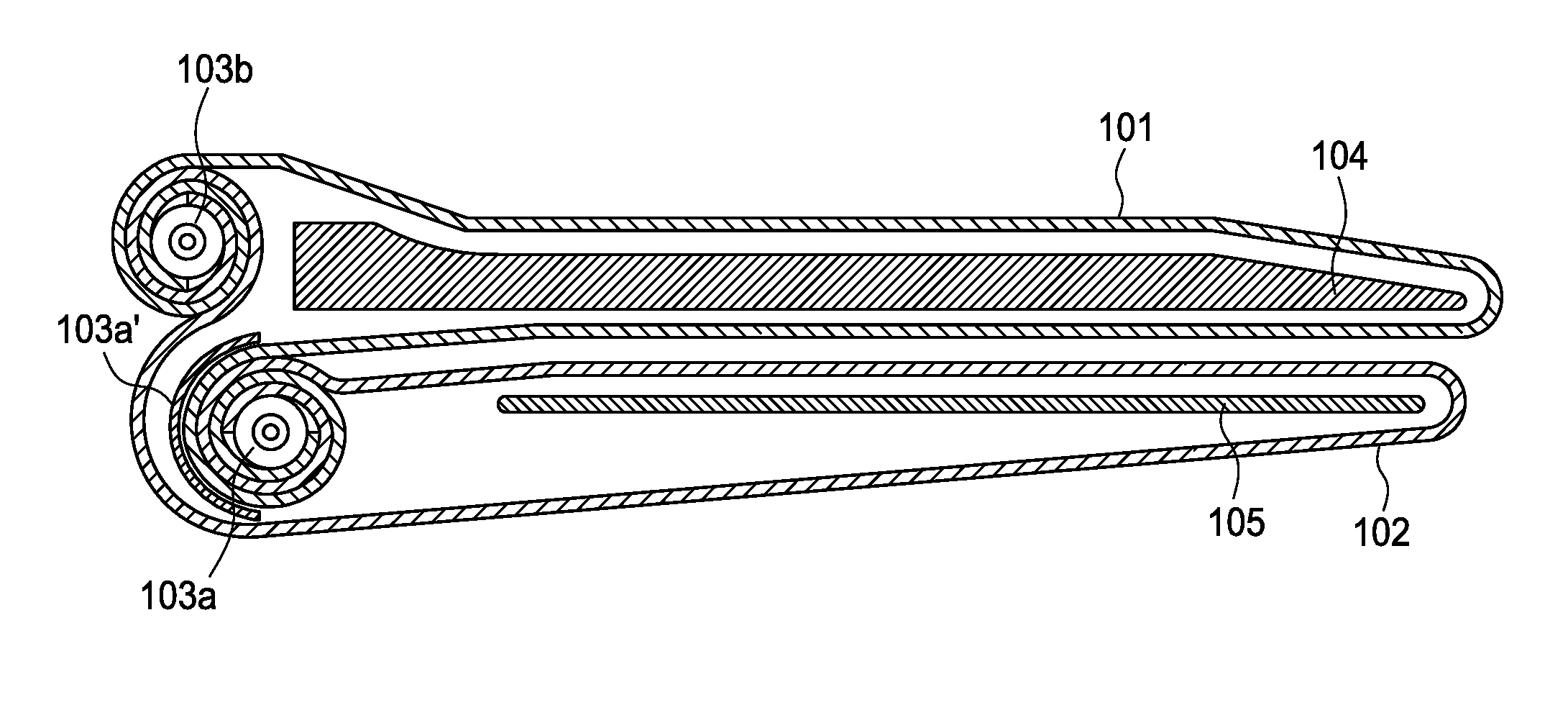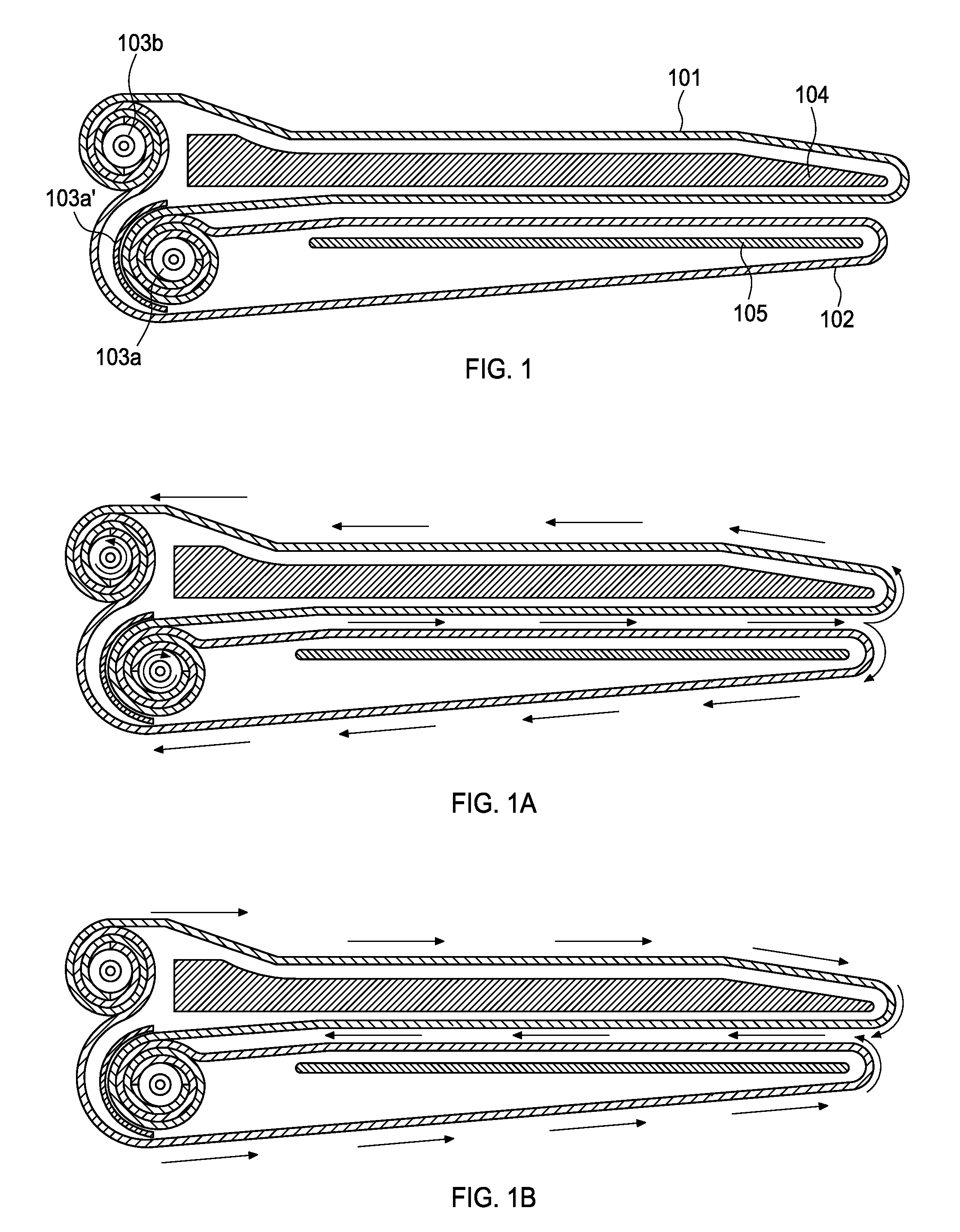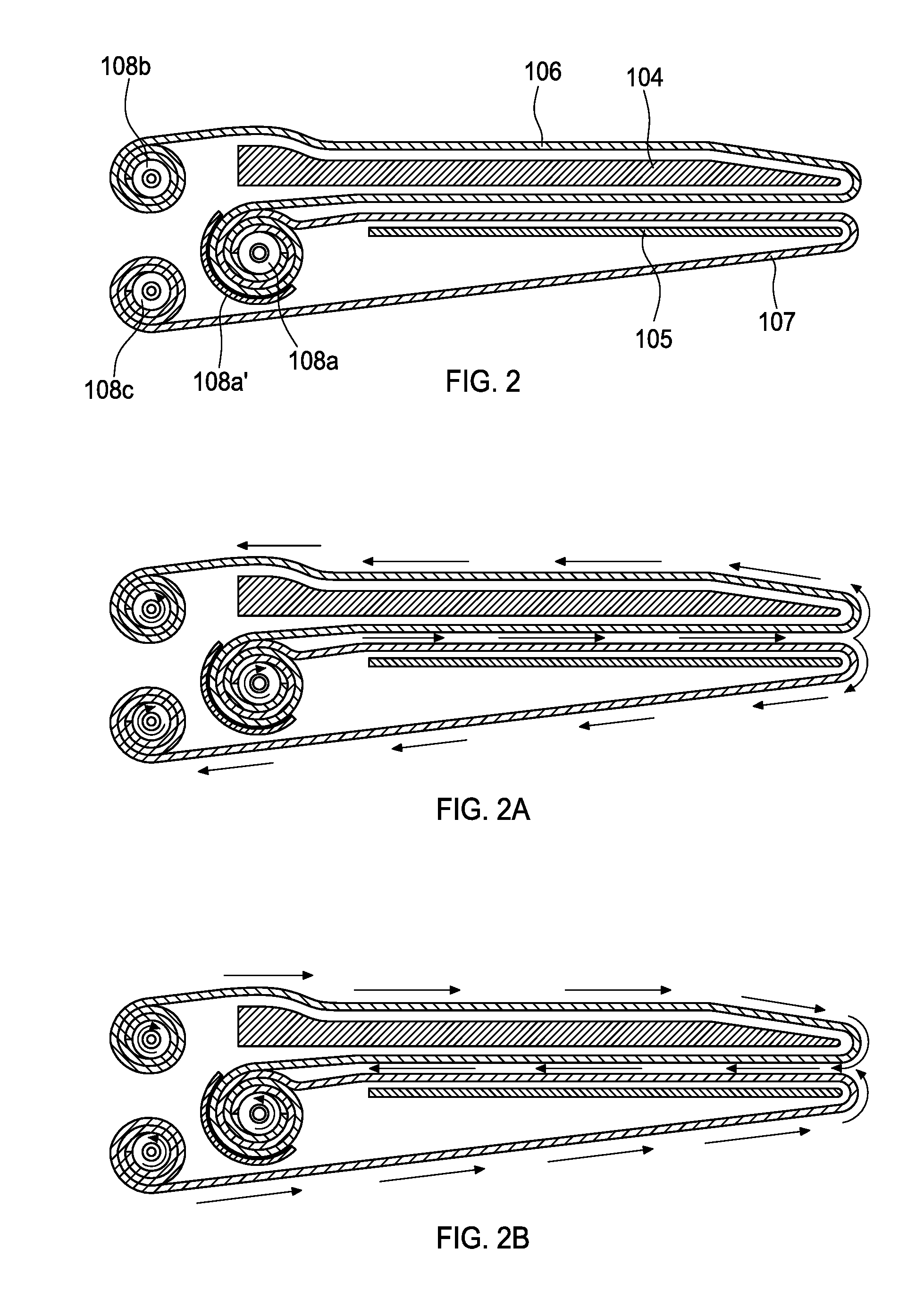Transfer belt mechanism associated with patient transfer gurney system
a technology of transfer belt and patient transfer, which is applied in the field of mechanical equipment used, can solve the problems of patients often having trouble moving themselves from one bed to another, nurses and hospital staff involved in patient transfer are prone to the occupational hazard of lower back pain, and patients are often prone to discomfor
- Summary
- Abstract
- Description
- Claims
- Application Information
AI Technical Summary
Benefits of technology
Problems solved by technology
Method used
Image
Examples
Embodiment Construction
[0034]The best mode for carrying out the invention is presented in terms of its preferred embodiment, herein depicted within the FIG. 1
DETAILED DESCRIPTION OF THE INVENTION
[0035]As shown in FIG. 1, the mechanism includes two flexible non endless belts attached to two rollers, according to the preferred embodiment. In the illustrated embodiment, two flexible non endless belts (101, 102) whose width is slightly less than the length of the stretcher and whose length is slightly longer than thrice the width of the stretcher, wherein said stretcher has two rollers (103a, 103b) on the side where it is mounted on two pillars (not shown in the FIG. 1). One end of first non endless belt 101 also referred as upper belt and one end of second non endless belt 102 referred as lower belt are attached on to roller 103a. The belt 101 or also referred as upper belt goes around the stretcher 104, the belt 102 or also referred as lower belt goes around the Plate 105 below the stretcher and the other e...
PUM
 Login to View More
Login to View More Abstract
Description
Claims
Application Information
 Login to View More
Login to View More - R&D
- Intellectual Property
- Life Sciences
- Materials
- Tech Scout
- Unparalleled Data Quality
- Higher Quality Content
- 60% Fewer Hallucinations
Browse by: Latest US Patents, China's latest patents, Technical Efficacy Thesaurus, Application Domain, Technology Topic, Popular Technical Reports.
© 2025 PatSnap. All rights reserved.Legal|Privacy policy|Modern Slavery Act Transparency Statement|Sitemap|About US| Contact US: help@patsnap.com



